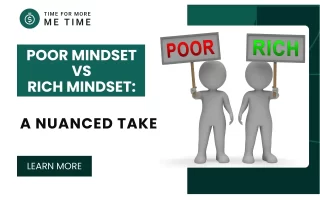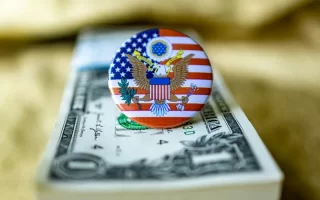On April 2, 2025, President Donald Trump signaled the start of his massive tariff against every country in the world by declaring a national emergency. This is his response to the perceived unfair trade between the US and other countries. Essentially, the tariff aims to balance out the trade deficit between the US and its trading partners.
The tariff is set to be reciprocal, meaning the US will impose the same amount of tariffs that the other country imposes on the US However, based on the tariff list chart that Trump displayed on April 2, the tariffs aren’t truly reciprocal. Most of the tariff rates the US is imposing are lower than those that other countries are imposing on the US, often only charging 50% of the tariff that the other country is imposing.
For example, Kazakhstan charges the US 54%. In response, the US imposed a tariff of 27%, which is half of 54%. The lowest tariff is 10%, which is only applied to countries that have a 10% tariff against the US
Canada and Mexico, the US’s close neighbors, were not included in the list because they were the first ones hit with tariffs of 25%. Another country excluded from the list is Russia, as tariffs were not imposed on that country due to existing trading and economic sanctions.
What Are Tariffs
A tariff is essentially a form of taxation on a country’s exports to another country. For example, let’s consider the US and Canada. If Canada exports dairy products to the US worth $1,000,000 and the US imposes a 25% tariff on Canada’s dairy products, Canada would need to pay $250,000 in tariffs to the US to allow its lumber to be sold in the US
Why Put Tariffs In The First Place
With the recent extensive discussions about tariffs, the reasons for imposing them have expanded. Here are some of the key reasons:
- Protect Domestic Industries: Tariffs can protect domestic industries from foreign competition. By making imported goods more expensive, tariffs can help local businesses thrive and maintain jobs within the country.
- Balance Between Imported and Local Products: Sometimes, imported products can be significantly cheaper than local products. To equalize the playing field, tariffs are imposed to raise the prices of imports, making them more comparable to local products.
- Generate Revenue for the Government: Tariffs can serve as a source of revenue for the government. The taxes collected from tariffs can be used to fund public services and infrastructure projects.
- Encourage Domestic Circulation of Money: Tariffs can help keep money circulating within the country by encouraging consumers to buy locally produced goods instead of imported ones.
- Rebuild the Country as an Industrial Powerhouse: Tariffs can be used to support the revitalization of domestic industries, helping to establish the country as a competitive industrial powerhouse.
- Retaliate Against Other Countries’ Tariffs: Tariffs may be imposed in response to tariffs imposed by other countries, which can weaken the country’s exports. This retaliatory measure aims to protect domestic industries from unfair trade practices.
- Trade Deal Leverage: Tariffs can significantly reduce the profits of another country. If the country imposing tariffs is the main market for the receiving country, the tariff can serve as leverage for negotiations or compromises.
Currently, the president has stated most of these reasons for imposing tariffs on all countries in the world. While most reasons are ideal, trading partners, businesses, and consumers may react differently from what is expected, which may negate the potential positive results of the tariffs.
What Happens With Trade
Tariffs can greatly affect the prices of imported goods from other countries. For example, if the US imposes a 25% tariff on Canada’s dairy products, exporters from Canada will adjust their pricing to maintain their profit margins despite the tariff.
Let’s say the export is worth $1,000,000. With a 25% tariff, Canada would only receive $750,000 after the tariff is applied. To prevent this loss and to achieve the expected $1,000,000, they would need to raise the price to approximately $1,333,334. Twenty-five percent of $1,333,334 is $333,334. Subtracting that tariff from the total, Canada would still receive their expected $1,000,000.
Of course, this is not the definitive response. Exporters may react or behave differently depending on the political and economic climate between the two countries involved in the trade, among other factors.
How Does This Affect Businesses
Since exporters will raise the value or price of their exports, retailers in the country will also respond to the sudden increase. For example, if a gallon of Canadian milk costs $3 before the 25% tariff on Canadian dairy products, retailers may need to raise the price to $4 to prevent losing profit, as the cost of supply for the retailers becomes more expensive.
Like before, this is not a definitive reaction. There are other factors—supply disruption, increased demand, et cetera—that can also contribute to raising the prices of these tariffed products in addition to the effects of the tariffs. Therefore, that $3 gallon of milk could even be priced above $4.
How Do Tariffs Affect Us In The Short Run
Ultimately, consumers, which includes us, will bear the brunt of the increased prices caused by tariffs. However, to counter this inconvenience, we can always opt to buy local products or choose another imported product that is cheaper.
Sometimes, though, there are no better or cheaper alternatives. Even if alternatives exist, if you have loyalty to a certain product because of its quality or simply due to brand loyalty, you may end up purchasing a subjectively inferior product in your eyes, despite the lower price. Alternatively, you might choose to bear the burden of the higher prices.
Another point to consider is that not all products can be easily separated by brand or type. For example, a tariff on oil, gas, and lumber can raise prices for these commodities overall, as they are interconnected with other materials. This means that the impact of tariffs can extend beyond the specific products being taxed, affecting related markets as well. So, looking for alternatives can be a lost cause.
How Do Tariffs Affect Us In The Long Run
The end goal of the president’s tariffs is to establish fair trade between the US and the rest of the world. Ideally, he is aiming for a scenario with zero tariffs on both sides. Once this is achieved, the outcome can be either positive or negative, depending on how US consumers and global markets react.
From an optimistic perspective, US exports could increase if the global market experiences cheaper US products without the burden of tariffs from their own countries. This could lead to greater demand for American goods, boosting the economy and creating jobs. Additionally, local US consumers may become more accustomed to domestic products, fostering a sense of national pride and supporting local businesses.
However, it is important to consider potential downsides. If tariffs are removed and foreign competition increases, some domestic industries may struggle to compete, leading to job losses in those sectors. Furthermore, while consumers may benefit from lower prices on imported goods, they could also face challenges if domestic producers cannot keep up with demand or if quality varies significantly.
In the long run, the impact of tariffs and their removal will depend on various factors, including the responsiveness of domestic industries, consumer preferences, and the overall health of the global economy. Policymakers will need to carefully monitor these dynamics to ensure that the intended benefits of fair trade are realized without unintended negative consequences.
Key Points
- Imposition of Tariffs: On April 2, 2025, President Donald Trump announced a massive tariff on all countries, declaring a national emergency in response to perceived unfair trade practices. The main goal is to balance the trade deficit between the US and its trading partners.
- Reciprocal Tariffs: The tariffs are intended to be reciprocal, meaning the US will impose tariffs equivalent to those imposed by other countries. However, the actual rates imposed by the US are often lower than those imposed on it.
- Impact on Prices: Tariffs can significantly affect the prices of imported goods. For instance, a 25% tariff on Canadian dairy products would lead to higher prices for consumers, as exporters adjust their prices to maintain profit margins.
- Effects on Consumers and Businesses: Consumers will ultimately bear the increased costs due to tariffs, which may lead them to seek local alternatives or cheaper imports. However, brand loyalty and the lack of alternatives can limit their options, forcing them to accept higher prices.
- Reasons for Imposing Tariffs: Tariffs are imposed for various reasons, including protecting domestic industries, balancing competition between imported and local products, generating government revenue, encouraging local consumption, and serving as leverage in trade negotiations. However, the effectiveness of these tariffs may be undermined by unexpected reactions from trading partners, businesses, and consumers.






